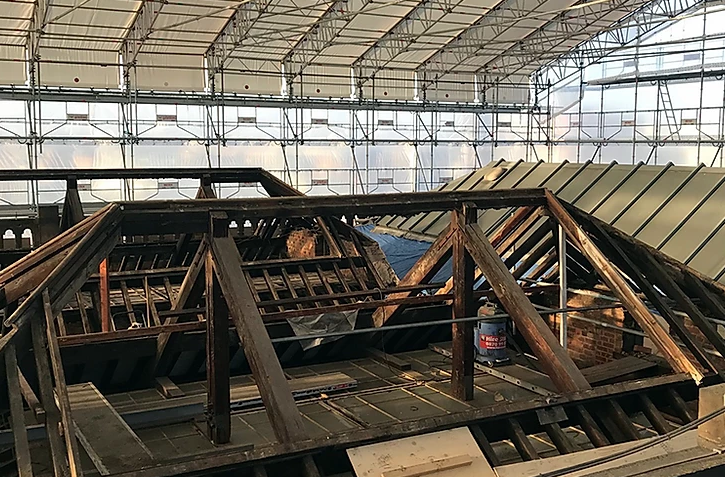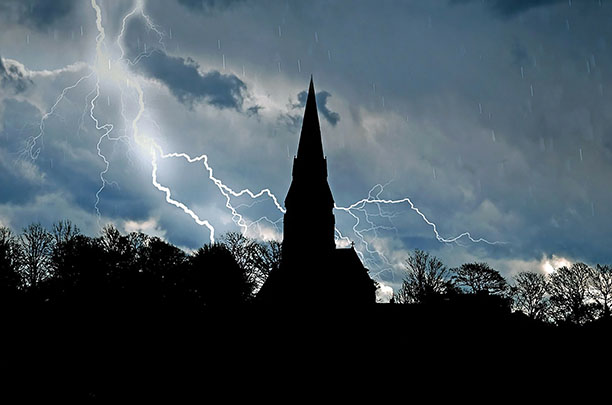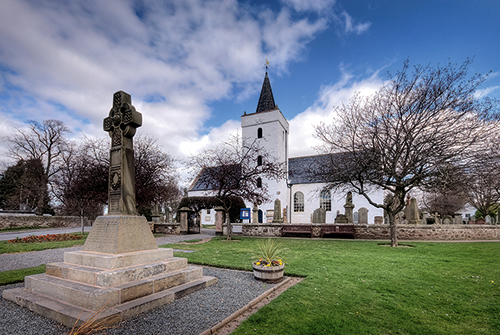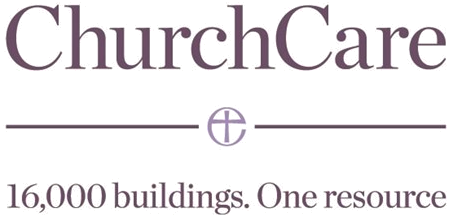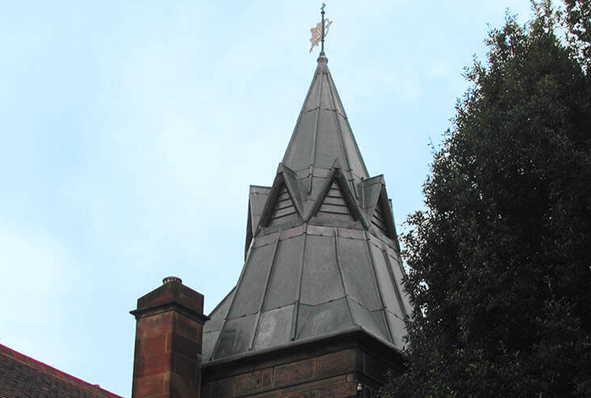Heritage Roofing
Heritage roofing - maintaining our iconic buildings
The UK is home to some of the most iconic buildings in the world, from stunning churches and cathedrals to historic stately homes. Each and every one of these remarkable feats of architecture requires regular maintenance to ensure they remain in the very best condition, allowing them to be enjoyed for generations.
Lightning Protection
When lightning strikes are you protected against this act of God?
The issue of lightning protection in churches is one that has exercised this publication for many years. In this four-part series of spotlights on the issue we will be revisiting various aspects of the subject, beginning with an overview of current thinking.
Traditional Lime
Lime: it’s better for buildings – and for the environment
It is now fairly well known that cement is not good for old buildings and that lime mortar should be used. But why? What are the advantages and what are the disadvantages? In order to begin to answer those questions it is necessary to understand the nature of traditional building, the process by which buildings used to be built, and how it differs from modern construction, the process by which we build today.
Audio Visual
Audio visual equipment in church buildings
This guidance is issued by the Church Buildings Council under section 55(1)(d) of the Dioceses, Mission and Pastoral Measure 2007. As it is statutory guidance, it must be considered with great care. The standards of good practice set out in the guidance should not be departed from unless the departure is justified by reasons that are spelled out clearly, logically and convincingly.
Read More...
CRE Events
Churches are coming under starter’s orders for CRE 25
Churches across the nation are beginning to make preparations for their visit to Christian Resources Exhibition’s CRE 25.
Insurance
You need to ensure that reasonable precautions are in place at your church to keep it safe for those who use it. To do this, you need to think about what might cause harm to people.
You will then need to decide if the precautions already in place are adequate. If they are not, you may need to identify further action to prevent any danger. When done formally, this is known as a risk assessment.
LPOW Grants
£23 million government package to support restoration of thousands of listed places of worship
Heritage Minister Sir Chris Bryant has announced that the Listed Places of Worship Grant Scheme will be extended into the next financial year, providing £23 million so that thousands of historical buildings, including churches, synagogues, mosques and temples, can carry out restoration work.
Lead Roofing
Lead is one of the oldest materials in the roofing industry and is still commonly used throughout the world today.
Lead roofing is a traditional roofing method which has been used in the industry for hundreds of years, and is therefore proven to be extremely reliable. Lead roofing, and sand-cast lead, in particular is ideal for old buildings such as churches or historical renovations, whereas milled lead roofing is a mass-produced alternative, used for precision and accuracy in homes and commercial buildings alike.
Home
Solar Control within a Heritage Building
THE SUN CAN DESTROY THE COLOUR OF PICTURES, PHOTOS, CURTAINS, CLOTHES AND FURNITURE. IT CAN ALSO CAUSE DAMAGE TO PAINT, WOOD AND OTHER MATERIALS BE IT AT HOME OR IN YOUR SHOP DISPLAY WINDOW.
UV is Not the Only Cause of Damage
Fading is usually thought to be caused by Ultra Violet light in sunlight. In fact, fading is caused by all parts of the solar energy reaching the earth: UV, Visible Light and solar heat all cause fading and damage.
Who can benefit by protecting goods and materials from fade and damage?
Museums can protect their paintings and other works of art, artefacts, clothing, etc. from damage caused by solar energy – and can provide a good optical environment for conservation work without distortion of colours. Businesses can protect their investments in
furniture and office equipment as well as carpets, curtains, etc. Shop and home owners can reduce damage to valuable goods and merchandise.
How much slower will materials fade with UV protection film?
As a guide, specialist UV filtering films often halve the rate of fading, or, in other words, window films double the time taken for the same amount of fade / damage. However, it is essential to remember that different materials react in very different ways. The types of materials, fabrics, dyes and colours used to manufacture your product strongly influence the extent of fading and damage resulting from solar energy; natural fibres (such as silk) and natural colours tend to fade and be damaged quicker than synthetic materials. And fading is no respecter of the cost or value of the goods – some expensive products can fade remarkably quickly.
Will blinds alone offer enough protection ?
Traditional roller Blinds made from Milltex Scottish Holland fabrics are excellent for controlling Lux levels in a room . However a vigilant houseekeper is needed to ensure the blinds are set at regular intervals during the day otherwise the house is in darkness or contents at risk. It is accepted that a combination of Films and Blinds is by far the most effective way of Solar Control within a building
Key points
• Fading cannot be stopped although in the majority of cases it can be reduced
• UV is the most important part of solar energy to filter, but filtering visible light and/or infra-red energy may also be needed
• Delicate or valuable items require more protection from sunlight than other items.
Therefore it is essential to ensure the best choice of window film is selected.
Specification of window films for fade reduction is relatively easy and advice is available from manufacturers, distributors and authorised dealers.
How to Specify the Correct Film
General
It is important to ensure that the selected film will continue to offer protection from fading and damage over a number of years. Fact Sheet 1 shows the UV transmission of UV filtering windows films after accelerated ageing – the performance of the two types clearly demonstrates the very significant difference in the protection offered. The good durability UV reducing film shows only a small increase in UV transmission after the equivalent of several years’ exposure to sunlight, compared to the high UV transmission of the other film.
Conservation of Valuable Items: Museums, Art Galleries, etc. UV:
Museums and similar institutions require the UV to be reduced to very low levels. A special measure of the quantity of UV in visible light is used, called microwatts per lumen (or μW/lumen). It is usually required for the UV to be < 75 μW/lumen and sometimes < 10
μW/lumen. Many window films will provide < 75 μW/lumen; specialist films will reduce UV to < 10 μW/lumen or even < 5 μW/lumen.
Visible Light:
The amount of visible light allowed in the museum depends upon the sensitivity of objects to visible light. A Scottish Museum gives recommendations for maximum light levels:
• 50 lux for sensitive items
• 200 lux for moderately sensitive items, and
• 300 lux for insensitive items
These recommendations mean that some areas may need little reduction in the amount of visible light transmitted by the glazing while other areas need a very high reduction in visible light transmission.
The 50 lux value may require visible light transmission to be reduced to much less than 5%.
Infra-red energy:
The requirement for filtering Infra-Red (IR) energy also depends upon the type of object being protected. Objects that are subject to thermal stress damage or to drying out (which then causes damage) will obviously require better protection than non-IR sensitive items.
Specification for UV, Visible and IR:
All three aspects, UV, Visible Light and IR, need to be considered according to the objects being protected. A simple method of selecting the appropriate film is to choose between specifying a clear film or a solar control film.
Offices and Other Workplaces
Many offices suffer from solar gain and glare related problems. By using solar control window films, you can resolve these issues and reduce UV and infra-red transmissions that can cause damage to property and health.
Shops and Homes
Many shops and homes require maximum light transmissions through their glass; a slight tint is acceptable, but often no more. It is essential to reduce UV light to very low levels while reducing a little of the visible light and direct infra-red energy transmission can provide extra protection.
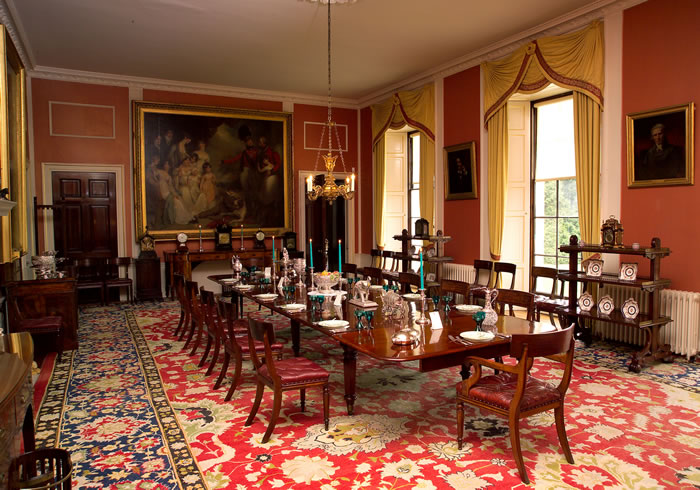
Thirty Five years ago John Chamberlain of Chamberlain Solar Controls (CSC) recognised the damage caused by these elements and found the solution using Polyester Films which filter out at least 99% of the harmful UV, reject infrared heat, reduce visible light transmission and still leave a pleasantly lit living or display environment.
Damage due to fading (Chemical deterioration) is caused by UV light, visible light, heat (including infrared light), artificial lighting indoors, humidity and poor dye anchorage. The first three cause 90% of the fading generally observed.
UV, visible light and heat can all pass through ordinary glass and can cause expensive damage to Antiques, Paintings and Furnishings in the home, museums, galleries, shops and offices.
CSC have concentrated on looking at new products and discovered spectrally selective films which can reduce Infrared rays as well as Ultraviolet which combined cause Chemical deterioration. This range of films also can reduce heat loss, something that came along as an added bonus for people in heritage properties.
The introduction of these films has enabled CSC to recently win contracts with English Heritage and local authorities. CSC Window Films is also approved by The National Trust to provide protection for its many national treasures. The film is also used extensively in Stately Homes, Museums and Art Galleries.
The next phase for CSC has been to develop blinds made from films to enable Leaded Light areas to be protected without having to film each pane therefore reducing damage to the lead work when the films are eventually removed.
CSC offer a complete survey for light sensitivity using light monitors to ensure any potential damage to valuables is avoided.
Our expert advice on the correct film type for the task and glazing compatibility will ensure an appropriate and effective solution.
Safety & Security Films
• Comply with health & safety and building regulations
• Provide security to your premises from vandalism and explosions
• Can incorporate solar control properties
UV IR & Solar Films
• Reduce solar gain and glare
• Provide privacy
• Improve your premises' cosmetic appearance
Sun & Solar Blinds
• Full range of traditional and modern sun blinds, with manual or motorized operation.
• Specialist materials to allow the building’s occupants continued vision to the exterior.
From Jed Southgate CSC Solar Windows http://www.cscwindowfilms.co.uk









